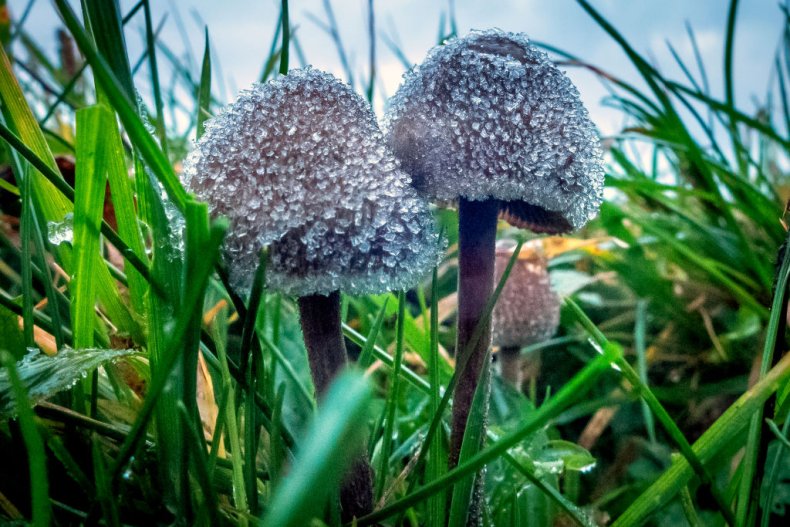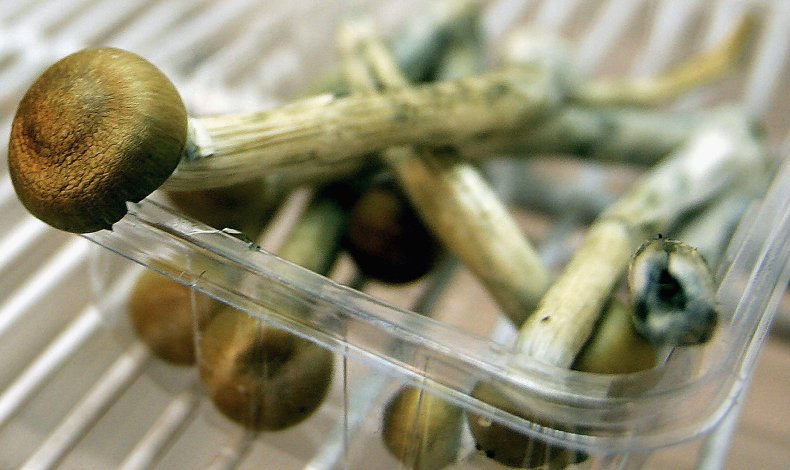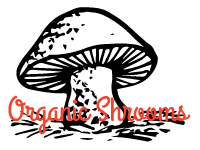In May, Denver, Colorado passed a ballot measure decriminalizing psilocybin mushrooms, more commonly known as magic mushrooms, or simply shrooms. Passed by a narrow majority, Denver residents voting on Ordinance 301 declared “the adult possession and use of psilocybin mushrooms” would become the city’s lowest law enforcement priority, further prohibiting the city from spending resources on penalizing shroom use. The city council of Oakland, California passed a similar resolution less than a month after. Similar to cannabis, which has also been decriminalized or legalized in several states, psilocybin mushrooms continue to be illegal on the federal level, and are listed as a Schedule 1 narcotic.
But unlike cannabis—consumed by approximately half the population of the United States, with 22 million people reporting cannabis usage within the previous month—shrooms are consumed relatively rarely, with only about 0.1 percent of respondents reporting psychedelic (a category which includes mescaline, LSD, peyote and MDMA) use within the past year. In 2010, approximately 21 million Americans had tried magic mushrooms at least once in their lifetime.
Here’s our guide to magic mushrooms, for those looking to experience what psilocybin mushshrooms have to offer.
What Are Magic Mushrooms?

Magic mushrooms is a generic term for anyone fungi containing psilocybin, a chemical compound which, when digested into psilocin, produce psychedelic experiences and an altered state of consciousness. Psilocybin mushrooms—often shortened to “shrooms”—commonly sold in the United States include Psilocybe semilanceata, found throughout North America and Europe,and Psilocybe cubensis, which were first scientifically described in Cuba and are native to much of South and Central America.
Psilocybin mushrooms have been used by human societies for thousands of years, and are featured in prehistoric art in both Europe and Mesoamerica. The use of hallucinogenic mushrooms in America was partially stamped out by Catholic missionaries during the Spanish conquest, but continued to be used in indigenous ceremonies in Mexico. In 1957, Life magazine published the account of two ethnomycologists, who participated in just such a ceremony (it was revealed in 2016 that their expedition was funded by the CIA’s Project MKUltra). A year later, Albert Hoffman, the Swiss chemist who first synthesized LSD, isolated the psychedelic compound psilocybin. Magic mushroom was popularized through the 1960s by researchers and psychedelic gurus, including Timothy Leary, Terence McKenna and Robert Anton Wilson.
NEWSWEEK SUBSCRIPTION OFFERS >
Magic Mushroom Effects
At low doses, shrooms can change your sense perception, warping surfaces, overlaying visual perception with repetitive geometric shapes, altering colors and changing how sounds are perceived. Hallucinogenic effects include auras around light, “breathing” surfaces and afterimages or “tracers.” Higher doses can cause synesthesia, distort cognizance of time and space, and give the user a sense of melding with the environment. More complex open or closed-eyes visual hallucinations are also possible, but are rarely confused for reality. Using shrooms also produces subjective emotional effects, which can range from hilarity to heightened anxiety. Magic mushrooms also dilate pupils.
Magic Mushroom Benefits
Shrooms have the potential to aid in the treatment of depression, eating disorders and addiction, but the study of psychedelics and their applications in medicine and psychology is still in its infancy, hampered by its Schedule I Narcotics status and the United States’ War on Drugs. However, shrooms have shown promise in combination with psychotherapy. Psychedelic use, including psilocybin, can produce spiritual benefits similar to meditation or other mystical experiences though comparing subjective effects isn’t easily quantifiable.
A 2006 study by Roland R. Griffiths published in the journal Psychopharmacology found that users reported joy and extreme happiness, with elevations in how participants rated their “positive attitudes, mood, social effects, and behavior,” even two months after consuming psilocybin mushrooms. Volunteers reported increases in a variety of “mysticism” and “state of consciousness” categories, including “sacredness,” “intuitive knowledge,” “transcendence of time and space,” “deep felt positive mood” and “ineffability.”
67 percent of the 36 patients in the trial study described their experience with magic mushrooms as “either the single most meaningful experience of his or her life or among the top five most meaningful experiences of his or her life,” ranking it similarly to the birth of a first child. None of the participants rated their experience with psilocybin as “having decreased their sense of wellbeing or life satisfaction.”
In follow-up studies published in 2011 and 2017, Griffith found permanent positive effects of psilocybin use—including heightened openness, gratitude, forgiveness, coping and “death transcendence”—particularly when combined with other spiritual practices, like meditation. However, at least one of the listed effects failed to replicate in a subsequent study.
Studies have also shown magic mushrooms can reduce depression in cancer patients and treat cigarette addiction better than pharmaceutical products like Chantix.
How Shrooms Work
Psilocybin in magic mushrooms becomes psilocin in the human body, which binds with serotonin receptors in the brain, particularly receptor 5-HT2C, which regulates the release of neurotransmitter chemicals related to appetite, cognition, anxiety, imagination, learning, memory, mood and perception. Psilocin increases activity in the visual cortex, while decreasing the part of the brain responsible for your ego, or individual sense of self.
How To Take Psilocybin Mushrooms

Editor’s Note: These tips are only intended to promote safe consumption of psilocybin mushrooms where legal. Currently, no recreational use is legal in the U.S. Brazil, Vietnam, Jamaica and the Netherlands do allow recreational consumption of psilocybin mushrooms, so travelers or residents determined to experiment can refer to this guide for the safest possible experience.
For more information on the safety, legality and effects of psilocybin mushrooms please refer to other sections in this article.
Schedule. A magic mushroom trip can last between four and eight hours, so it’s best to earmark an entire day for the experience. Even after the comedown, lingering effects can last for hours.
Find a chaperone. Often called a “trip sitter,” it’s essential to have someone around who won’t be consuming psilocybin, particularly for first-timers. Someone who has had previous experience with psychedelics is preferable. A trip sitter should be someone you trust, who understands they’ve signed up for an all-day commitment.
Dose. A typical dosage of psilocybin sold on the recreational black market is about 3.5 grams, or an eighth of an ounce—enough to fill the bottom of a small sandwich bag. However, research conducted at John Hopkins University School of Medicine and published in 2011 indicate many first-time users should consider starting with a smaller dose. Participants in the study were given 5, 10, 20 and 30 milligram capsules of psilocybin, with each dose one month apart. While mapping the capsule dosage on to mushrooms—the typical recreational method of consumption—is imprecise, the dosages roughly range from less than a gram of mushrooms to approximately five grams at the highest dose.
Gradually increasing dosages month-by-month resulted in the highest levels of reported well-being, life satisfaction and “persisting positive mood.” While even the smallest dose had positive effects, the 20 milligram dose registered the highest increases in well-being, which suggests that the 3.5 gram baggie of shrooms isn’t far off from the optimal dose, particularly for those with experience taking magic mushrooms.
Eat before. Appetites tend to be suppressed during a magic mushroom trip, so eating a meal an hour or two beforehand is advisable.
Consume. Shrooms taste earthy and bitter. They’re not very pleasant-tasting. A Reddit thread on the taste of shrooms compared Psilocybin cubensis to raw spaghetti, the dust on moth wings and soil right after rain. There’s a variety of ways to consume magic mushrooms that could make the taste more tolerable.
Shrooms are frequently ground before consumption, either with a mortar and pestle or using a coffee grinder. Ground psilocybin mushrooms can be prepared as a tea, by steeping in boiling temperature water and filtering. Magic mushroom tea can be combined with decaf tea, ginger, honey or lemon to help cut the bitter flavor. Ground shrooms can also be blended into smoothies, or with mixed into orange juice. Eating shrooms on a sandwich or with chocolate are also popular options.
Many people experience nausea while using magic mushrooms, typically within the first hour. Vomiting and stomach cramps are both common. Many report having more success with capsules or tea, as opposed to the whole mushrooms. Grinding up mushrooms to use in smoothies could also help smooth digestion. But there is no foolproof solution, so it’s best to go into an experience with magic mushrooms anticipating possible side effects, which are in no way an indication that something has gone wrong.
It can take between 30 minutes and an hour to begin feeling the effects of magic mushrooms, with peak effects typically experienced between two and three hours after consumption, regardless of dose.
The mushrooms are the medium. “Trip” advice often focuses on having activities on-hand to exercise your creative side. But don’t let others set your expectations in advance. Not everyone will want to pick up the watercolors, or listen to a ten-hour music playlist or watch “psychedelic” movies.
Don’t root. In studies of the therapeutic effects psilocybin, participants are often prone for much of the experience, reducing external stimuli with eye masks and headphones. For those hoping to focus on their mental well-being, this is one possible option. But a shroom trip can also be an opportunity to interact with nature, art, or other people in new and different ways. However, it’s possible to feel “stuck,” typically on an uncomfortable and recursive thought process—sometimes considered a “bad trip,” which can involve extreme fear or anxiety.
Under therapy conditions, trip sitters, or monitors, reassure patients experiencing fear and anxiety, sometimes comforting by touching the hand or shoulder. But with recreational use, it’s also advisable to change your surroundings. Seeking out something new to look at or experience can help bring you out of a discomforting hole. It’s important to remember that not only is it possible to change your subjective experience, but also remind yourself that the effects of magic mushrooms are temporary, and will eventually come to an end.
Sleep. After about seven hours, most people have “come down” from their magic mushroom trips. It is at the seven-hour point that the John Hopkins study had participants fill out their first survey, indicating most normal activities can be resumed. Still, lingering effects can remain, which makes it inadvisable to drive, perform work or make important decisions. Instead, get a good night’s sleep, which will curtail lingering physical effects and put you in the best position to integrate your psychedelic experience into your life the following day.
For more detailed information on taking psilocybin, check out the guide at TripSafe.org.
Are Shrooms Safe?
Magic mushrooms are among the safest recreational drugs based on reported rates of emergency medical treatment. Shrooms are safer than MDMA, tobacco, cocaine, alcohol and cannabis. Possible side effects include nausea, vomiting, drowsiness, lack of coordination and heightened blood pressure. Toxicity is very low, making it almost impossible to overdose on shrooms (the average person would need to eat several pounds to approach fatal toxicity.) The biggest potential for danger comes from people who pick their own magic mushrooms and make incorrect identifications.
While interactions with other drugs are poorly studied, shroom use in combination with antiretrovirals, St. John’s Wort, or antidepressants (SSRIs, tricyclics and MAOIs have been reported to reduce or increase psychedelic effects, making shrooms unpredictable) should be avoided.
Psychological effects are also possible, making the use of magic mushrooms inadvisable for anyone with a family history of psychotic disorders like schizophrenia. Similar to cannabis, which is used at higher rates by schizophrenics, the link between magic mushrooms and mental illness is poorly understood.
As with cannabis, LSD and other hallucinogens, magic mushrooms have also been linked to a poorly understood phenomena known as Hallucinogen Persisting Perception Disorder, or HPPD, in which sufferers report ongoing distortions to their perception, even years later. Symptoms can range from minor visual issues to disturbing hallucinations. LSD users are at the greatest risk for HPPD, though it’s unknown exactly how many people are affected, or how the disorder works. Estimates for the prevalence of HPPD ranges from 1 in 50,000 regular drug users to as much as one to four percent of LSD users.
Are Magic Mushrooms Addictive?
Shrooms are neither physically addictive or shown to cause psychological dependence. The active chemicals, psilocybin and psilocin, produce short-term tolerance in users, which diminishes its effects with repeated dosing. It can take several weeks to a month for tolerance to return to normal levels.
Are Psilocybin Mushrooms Legal?

While decriminalized in Denver, Colorado and Oakland, California, magic mushrooms are not legal for recreational use anywhere in the United States. A 2020 Oregon ballot initiative could make shrooms legal under licensed, therapeutic conditions.
